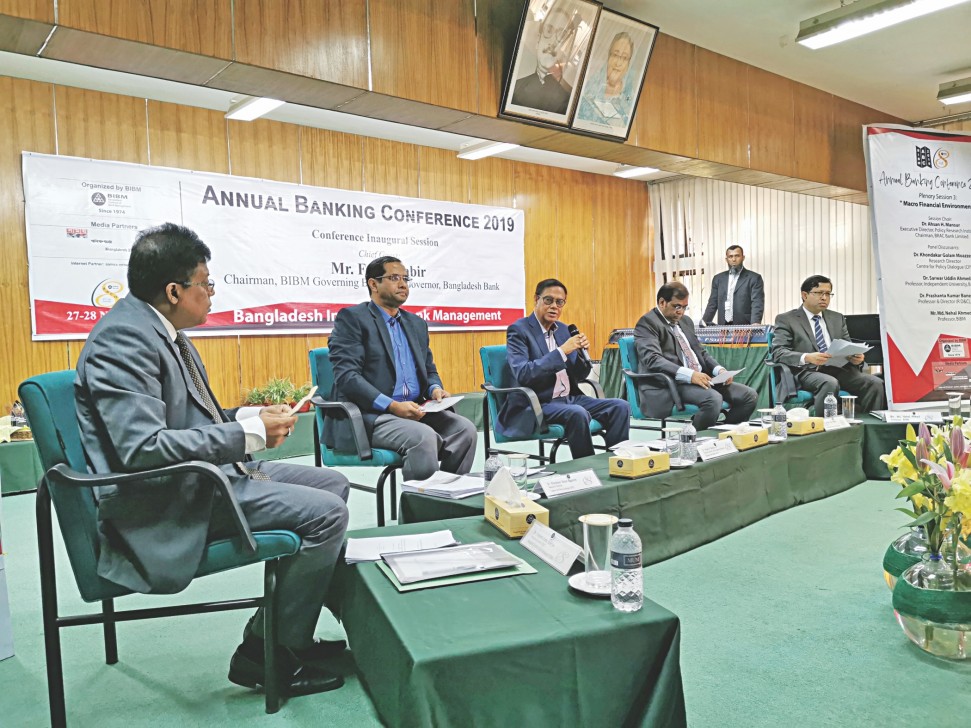Economic indicators contradict GDP growth figure: economist

Bangladesh’s macroeconomic indicators are not in keeping with economic growth numbers of the government, which not only raises questions about the figures but also points to a potential slowdown, a noted economist said yesterday.
“I have concern about the macroeconomic situation. A contradiction is seen between the picture of the indicators shown by the government and the reality,” said Ahsan H Mansur, executive director of the Policy Research Institute of Bangladesh, an independent think-tank.
The country clocked 8.13 percent gross domestic product (GDP) growth last fiscal year and has targeted to achieve 8.2 percent expansion in the current fiscal year.
“If the economy is really growing at such a high rate, why is revenue growing at 2.3 percent in real terms?” Mansur asked.
His comments came at a session of the annual banking conference organised by the Bangladesh Institute of Bank Management (BIBM) at its office in the capital.
The government says the manufacturing sector is growing at 19.5 percent, he mentioned, adding; “If it is true, then why is value-added tax falling? VAT is a direct result from the manufacturing sector.”
VAT collection fell 0.86 percent year-on-year in the first quarter of the current fiscal year, according to the National Board of Revenue.
“This is a serious issue,” said Mansur, also a former economist of the International Monetary Fund.
Exports are also not satisfactory, he said, adding that the textile sector is in a bad shape because their earnings are falling.
Exports slumped more than 17 percent year-on-year to $3.07 billion in October as the strong local currency continued to depress apparel shipments, government data shows.
“So, where is the growth coming from?” Mansur said, wondering whether the country is heading towards an economic slowdown.
“This is my concern,” he said.
According to Mansur, the financial sector is also not in a good shape. The return on asset in the banking sector was 1.8 percent in 2010 but it declined to 0.29 percent last year.
Similarly, the return on equity came down from 18.4 percent to around 4 percent during the period. “It shows our efficiency in the banking sector is declining,” he said.
Mansur, currently the chairman of Brac Bank, also questioned how default loans could rise to a high level amidst the economic growth of more than 8 percent.
Defaulted loans surged 24 percent to Tk 116,288 crore in September compared to that in December last year, the amount being the highest in the country’s history.
“If the economic growth rate is high, companies should be selling, selling and selling. They should be booming,” said Mansur.
He said the deposit rate in the banking sector is declining and if the trend continues, many banks would face problems.
Prashanta Kumar Banerjee, a director of the BIBM, said banks are giving long-term loans in the housing sector though they collect deposits for three to five years.
“So, banks are facing many problems,” he said, adding that entrepreneurs should raise long-term funds from the stock market. “Without a thriving bond and stock market, the economic growth will be impacted.”
Khondaker Golam Moazzem, research director of the Centre for Policy Dialogue, said the fourth industrial revolution is coming where the industrial sector and the garment sector will be capital-based, instead of labour-intensive. So, entrepreneurs will need skilled workforce.
He said local youths are educated but not skilled enough. As a result, entrepreneurs have to rely on foreign skilled personnel. In order to create skilled workforce, he emphasised skill-based education.
